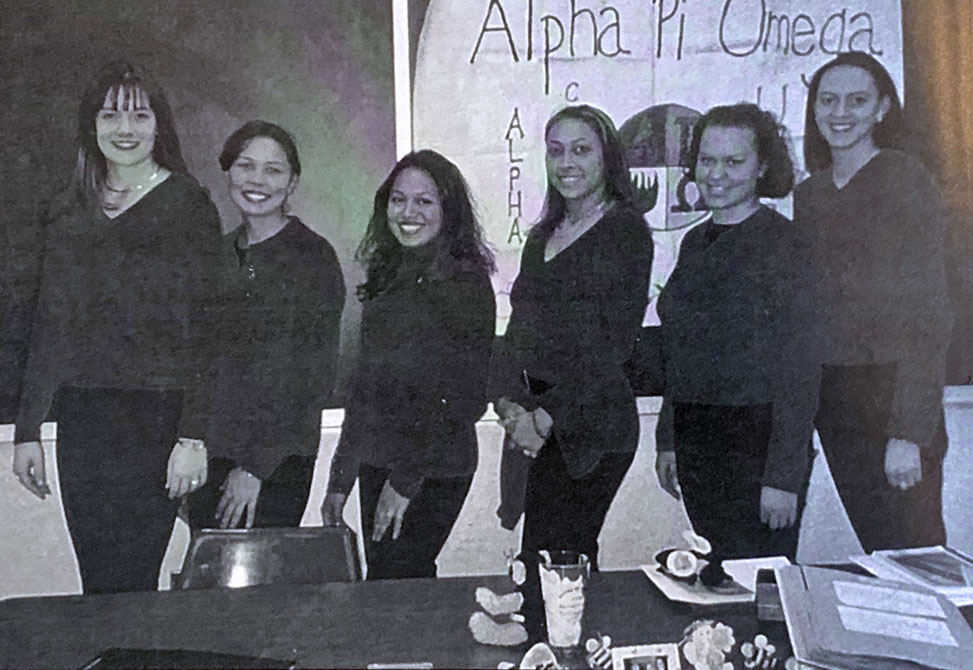Fraternities and sororities
The first fraternity on campus was the Beta chapter of Delta Kappa Epsilon, organized in April 1851. It was soon followed by Phi Gamma Delta, Delta Psi, Chi Psi, and Sigma Alpha Epsilon. They disbanded during the Civil War and university closing, returning to campus soon afterward. Alpha Tau Omega, active since 1879, is the longest consecutively active fraternity at UNC—Chapel Hill. In 1890 the Greek letter fraternities published the first yearbook, The Hellenian, which was replaced in 1901 by the university-wide Yackety Yack. Professional fraternities established chapters at UNC in the 1910s, starting with Alpha Chi Sigma, a chemistry fraternity, in 1912.
Although women began attending the university in the 1890s, the first sororities did not open until 1923, with Pi Beta Phi and Chi Omega. Their number increased from the 1930s through the 1970s, as women students gained a greater foothold. The first Jewish fraternity at UNC came in 1924, with the Omega chapter of Tau Epsilon Phi. In 1973 the Psi Delta Chapter of Omega Psi Phi became the first historically black Greek fraternity at Carolina; and the Kappa Omicron chapter of Delta Sigma Theta the first African American sorority on campus. In 1994 UNC—Chapel Hill undergraduates organized the nation's first sorority for Native American women, Alpha Pi Omega, which has grown to nineteen chapters across the country.
A number of cultural fraternities and sororities have joined these since the late 1990s, representing students interested in Asian, South Asian, Latinx, and multicultural experiences. All of the Greek fraternities and sororities are official student organizations at Carolina, and in 2018 about 17 percent of the students were affiliated with one.
Fraternity Row originally stretched from the site of Porthole Alley south to Cameron Avenue. A fire in January 1919 destroyed three of the ten houses and nearly burned down the new Carnegie Library (Hill Hall). The trustees decided to deal with the hazards of frame fraternity houses by moving them off-campus. They purchased lots on the west side of Columbia Street and exchanged the fraternities on campus property for new spaces there. The newly dubbed Fraternity Court was completed in 1926. Until recently, only two of the original fraternity houses remained: Hill Hall Annex, located just to the north of Hill Hall, was built in the 1890s as the Delta Kappa Epsilon Fraternity. It served many subsequent functions until it was demolished in 2017. The sole remaining structure is Evergreen House, which was built around 1890 as the Kappa Sigma Fraternity and now houses the Department of Psychology community clinic.
Date Established: 1851
Date Range: 1851 – Present

Members of Alpha Pi Omega, UNC's (and the nation's) first Native American sorority. Yackety Yack, 2000, North Carolina Collection, Wilson Library.

